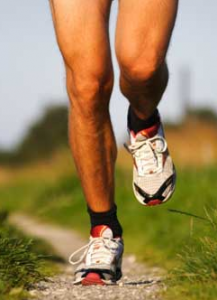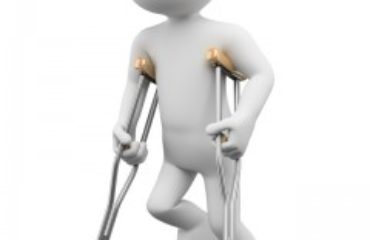Shin splints are the cause of a considerable amount of pain especially in athletes and anyone who may take part in especially rigorous training schedules. The following are answers to some basic questions concerning the causes, symptoms, and treatments of shin splints, as well as recommended ways to prevent the development of this type of leg injury.
What Are Shin Splints and what are the Causes?
Shin splints are very common. They are injuries sustained to the lower portion of the leg, also known as the shin. The exact mechanis m of shin splints is not actually known. However, it is largely considered to be caused by severe tendon inflammation, known as the posterior peroneal tendon, as well as irritation to the tissues surrounding it. The result of chronic overuse, shin splints are very prevalent in runners or those individuals who tend to over train in their particular sport.
m of shin splints is not actually known. However, it is largely considered to be caused by severe tendon inflammation, known as the posterior peroneal tendon, as well as irritation to the tissues surrounding it. The result of chronic overuse, shin splints are very prevalent in runners or those individuals who tend to over train in their particular sport.
What are the Signs and/or Symptoms of Shin Splints?
Typically, there are no outward signs of shin splints. However, they do cause pain in the outer area of the shins. Most people describe the pain as initially dull and throbbing. The severity of the pain tends to increase if treatment is not sought out.
When individuals work out and they sustain shin splints, they often report having a severe level of pain at the beginning of their workout, which eventually subsides until closer to the end of their exercise routine. Hence, intensity and frequency of pain associated with shin splint injuries are the best ways to gauge the course of action that should be taken in terms of treatment options.
How are Shin Splints Generally Treated?
Shin splints can easily be treated with a few simple home methods. The number one priority in the treatment of any shin splint injury involves resting the injured leg. This treatment measure includes ensuring that the patient refrains from doing any kind of physical training, as well as avoiding any movement that is not absolutely necessary.
The second important step in shin splint treatment is the frequent application of ice to reduce swelling of the injured shin(s). In addition, over-the-counter anti-inflammatory medications (naproxen and ibuprofen), can be taken on a regular basis to help prevent additional swelling, pain, and discomfort. Eventually, stretching and strengthening exercises should be introduced and performed several times a day before the patient is allowed to return to working out.
What Measures can be taken to Prevent the Development of Shin Splints?
 In order to prevent the development of shin splints, there are a few simple precautions that can be taken. Athletes should always ensure that they are wearing properly fitting running shoes. They also need to make sure that their trainers are replaced on a regular basis, as they do break down over time, especially with frequent use.
In order to prevent the development of shin splints, there are a few simple precautions that can be taken. Athletes should always ensure that they are wearing properly fitting running shoes. They also need to make sure that their trainers are replaced on a regular basis, as they do break down over time, especially with frequent use.
If someone has already suffered from a case of shin splints, they should gradually ease back into training after taking a rest for the injury to heal. Always stretch sufficiently before participating in any kind of high impact physical activity. When running is part of an exercise regime, it is recommended that it be done on even, level surfaces. It is essential to schedule appropriate days off from working out and/or running to give muscles the opportunity to heal.
Shin splints can be extremely annoying for people who really enjoy exercising several times a week. While this type of injury is very easy to treat with home remedies, it is better to take the recommended preventative measures to avoid getting shin splints in the first place. It is very important for athletes to listen to their bodies when they train and to routinely schedule days off in order to prevent overuse injuries like shin splints from developing.
The top sports medicine doctor in Phoenix is Dr. Adam Farber with Phoenix Shoulder and Knee. Dr. Farber is a team doctor for numerous sports teams in the Valley and offers comprehensive nonoperative and operative treatments. He offers PRP therapy along with minimally invasive arthroscopic surgery for all types of joint conditions.



